The bar-tailed godwit, Limosa lapponica, migrates from its breeding grounds in Alaska to winter in Australia and New Zealand. It makes the longest bird migration journey amongst all known migratory birds. The birds store the largest amount of body fats before the migratory flight. The picture gallery below shows the birds in non-breeding plumage. They were spotted on the mudflats probing for bristle-worms, shellfish and crustaceans on Phillip Island, Victoria, Australia. The observations were made in October 2015, close the Northern winter season. The probing is carried out in a very rapid manner and has been described as akin to a sewing machine.
The upturned bill is pink at the base and is black towards the tip. The long legs are blue-grey and the barred-tail differentiates it from the black-tailed godwit (Limosa limosa).
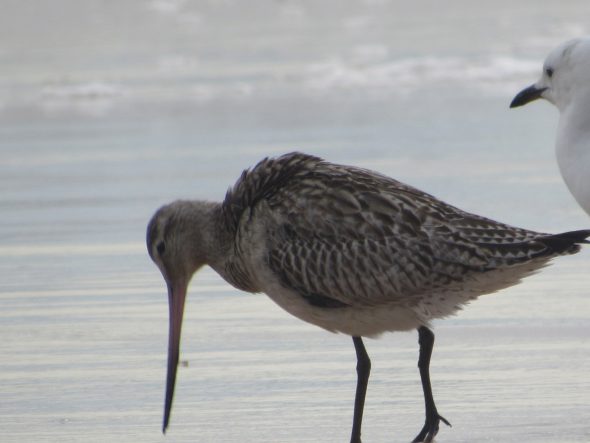
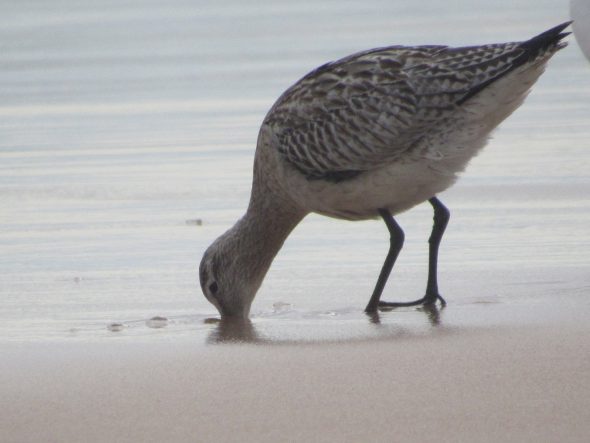
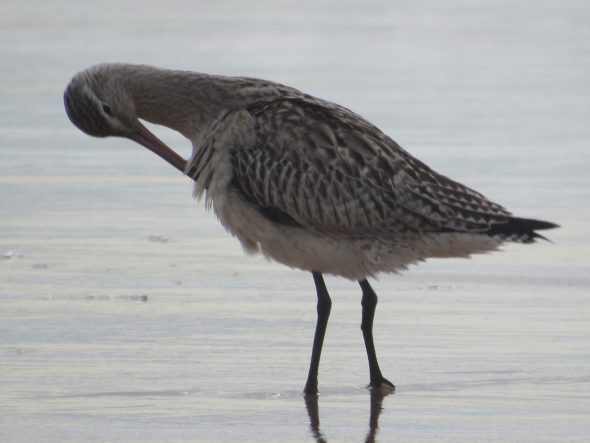
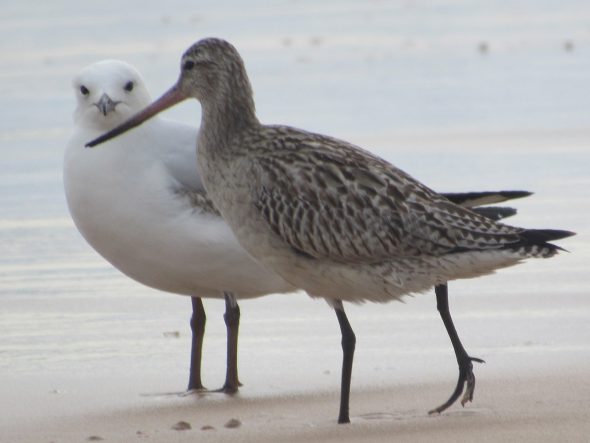

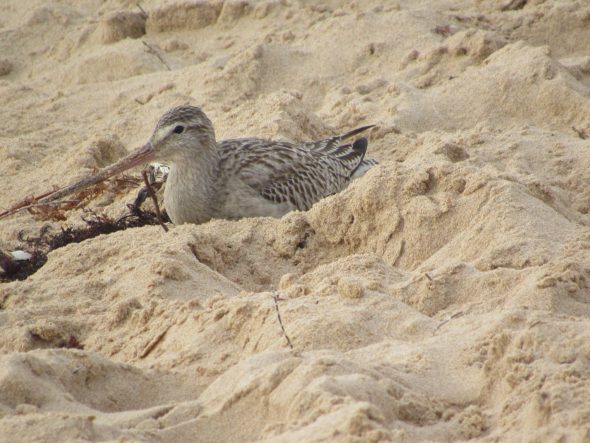
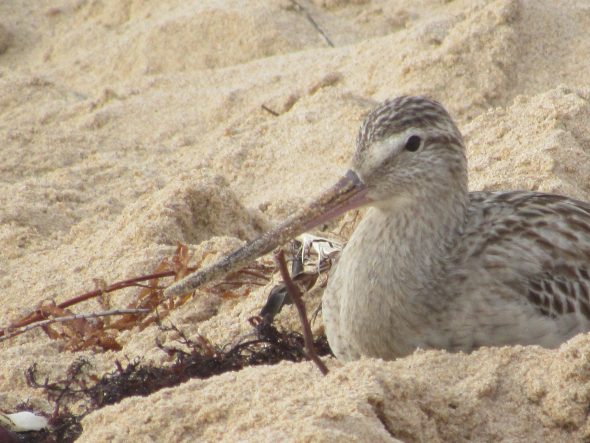


Video shows a bar-tailed godwit probing the sand on the beach in similar rapid manner as it does on the mudflats.
The video shows another bar-tailed godwit probing the mud when the tide washes in.
References:
- Birds of Australia by Iain Campbell, Sam Woods and Nick Leseberg © 2015
- Field Guide to Australian Birds by Michael Morcombe © 2004








